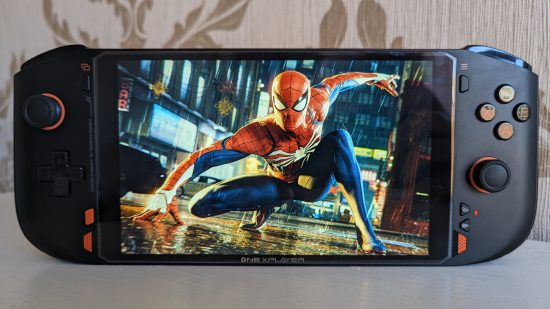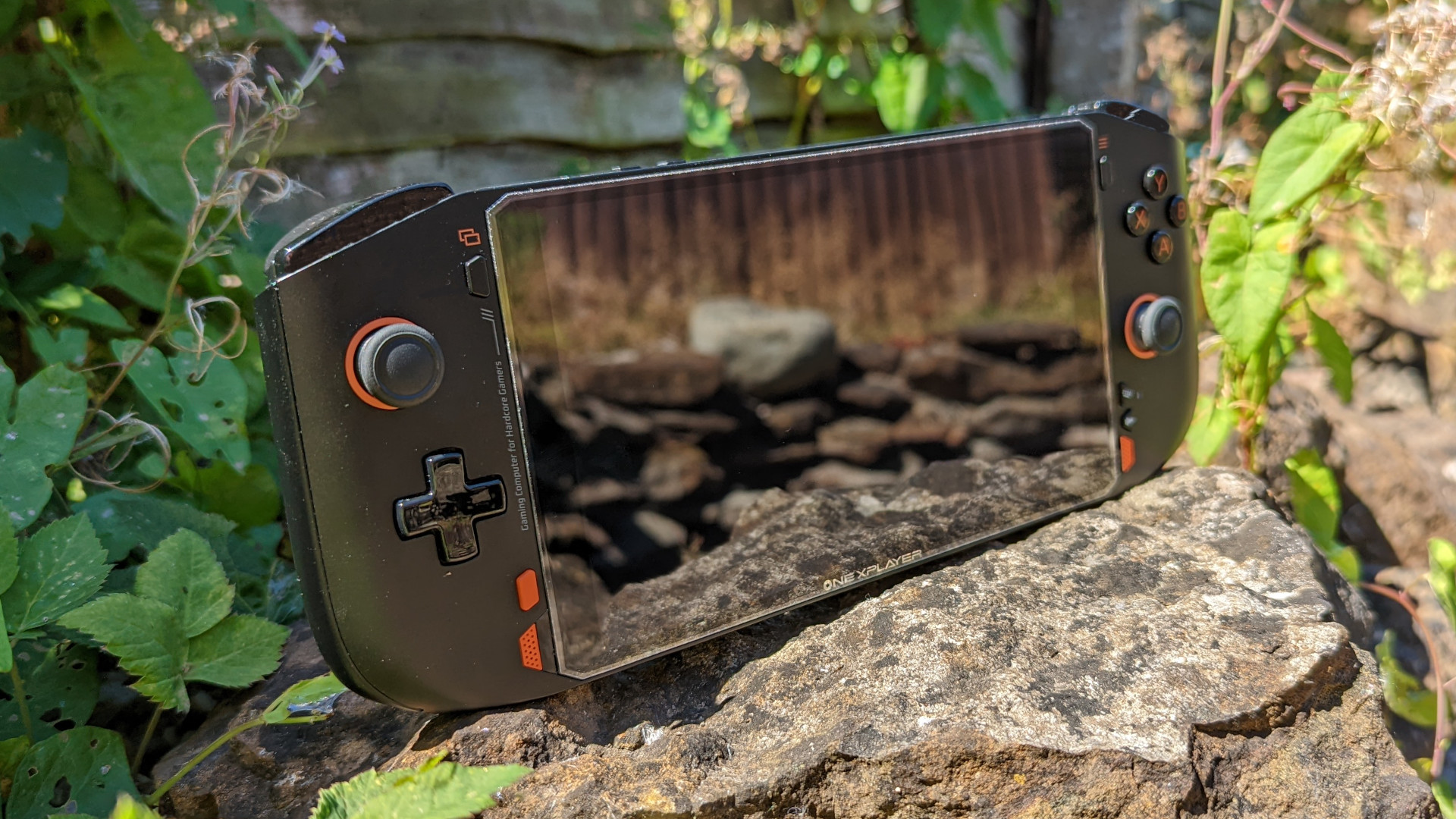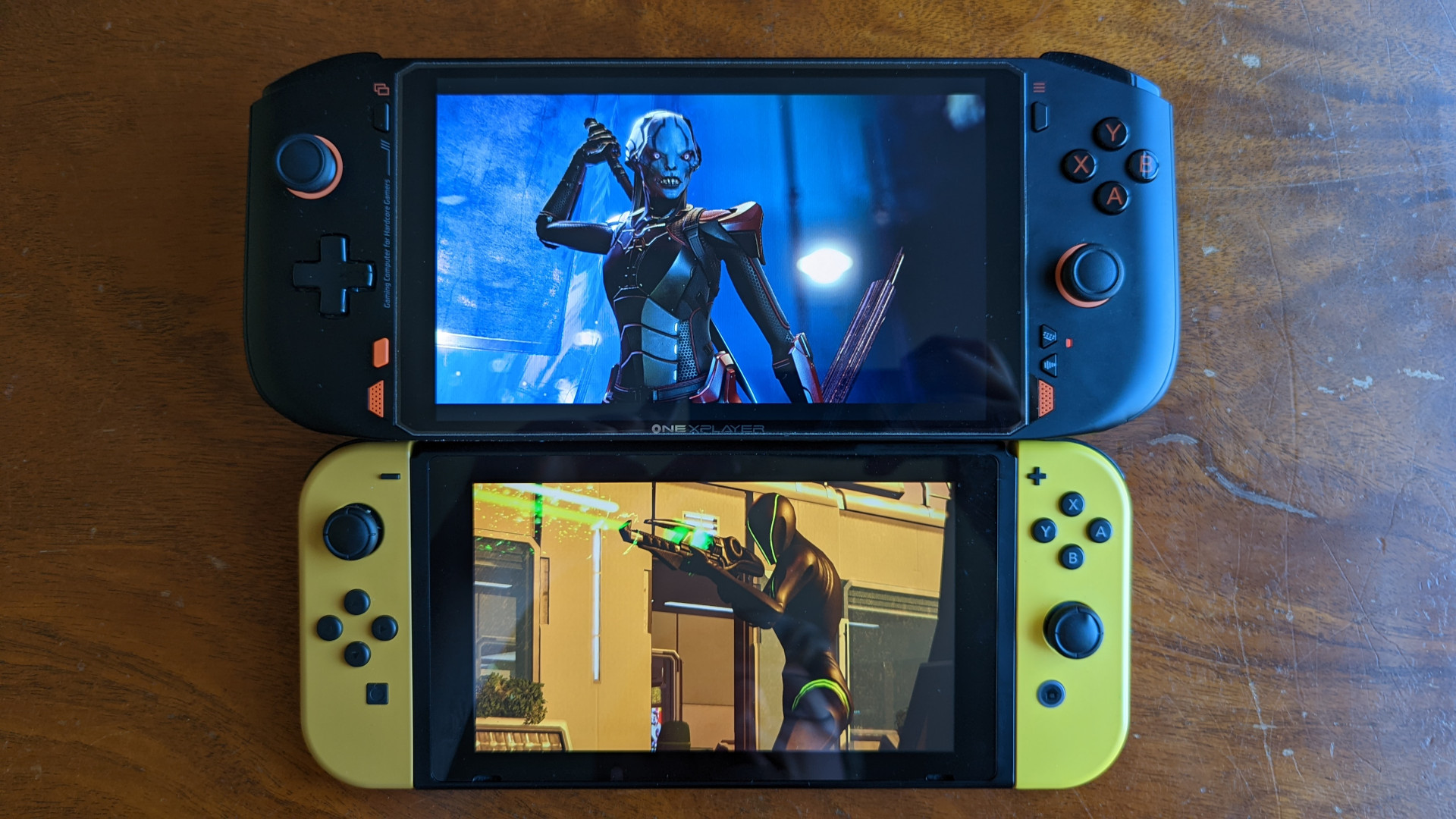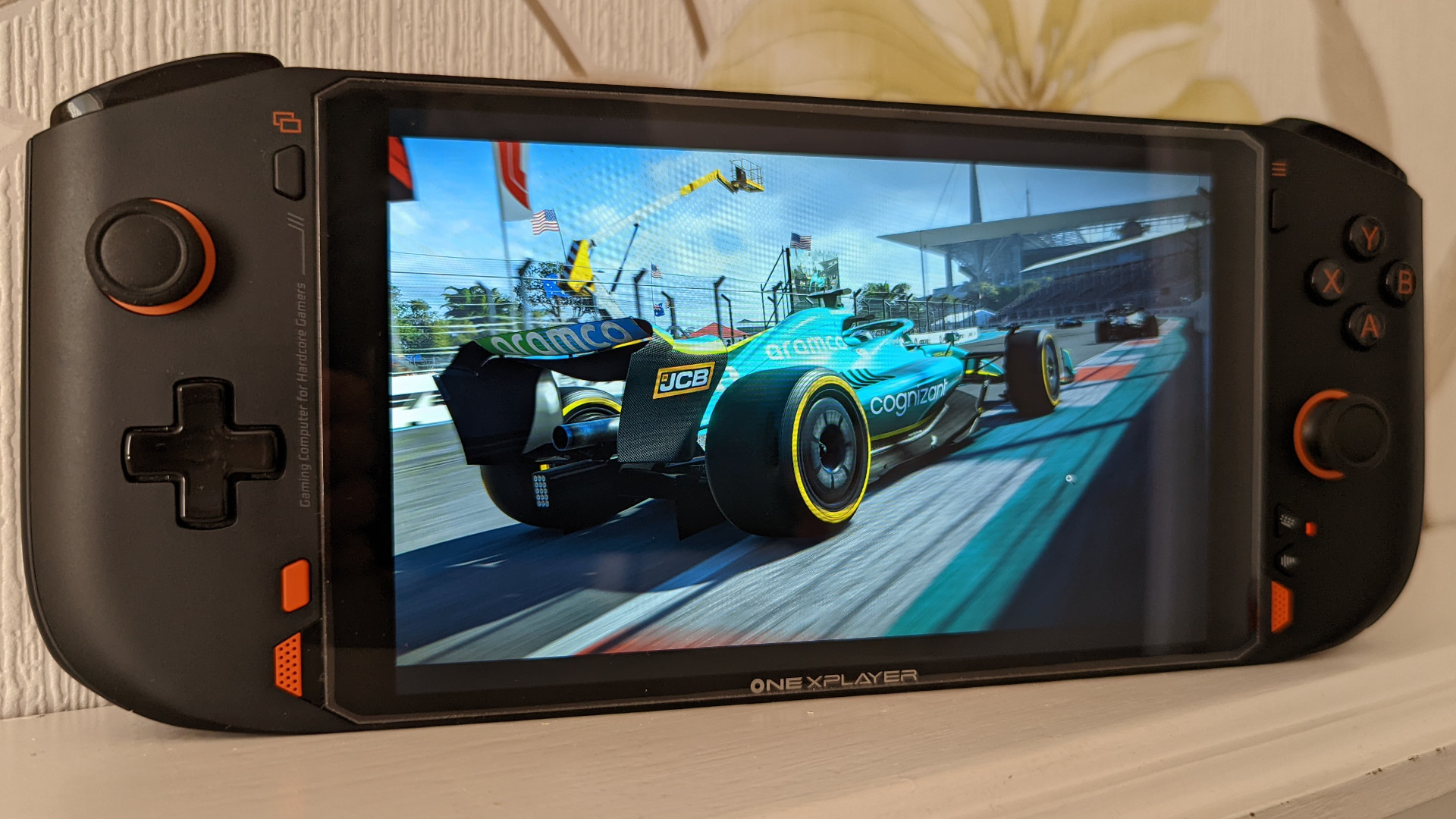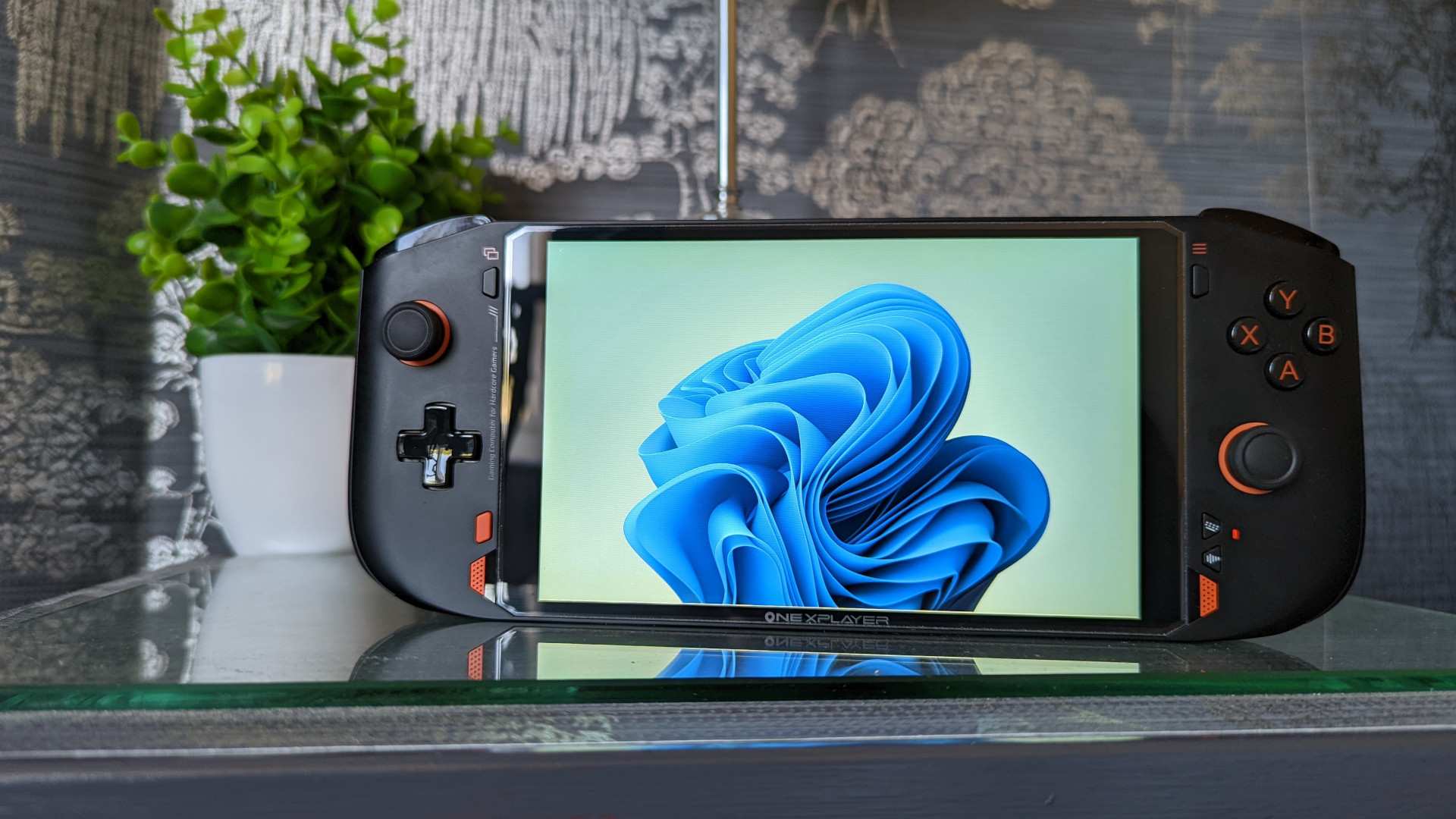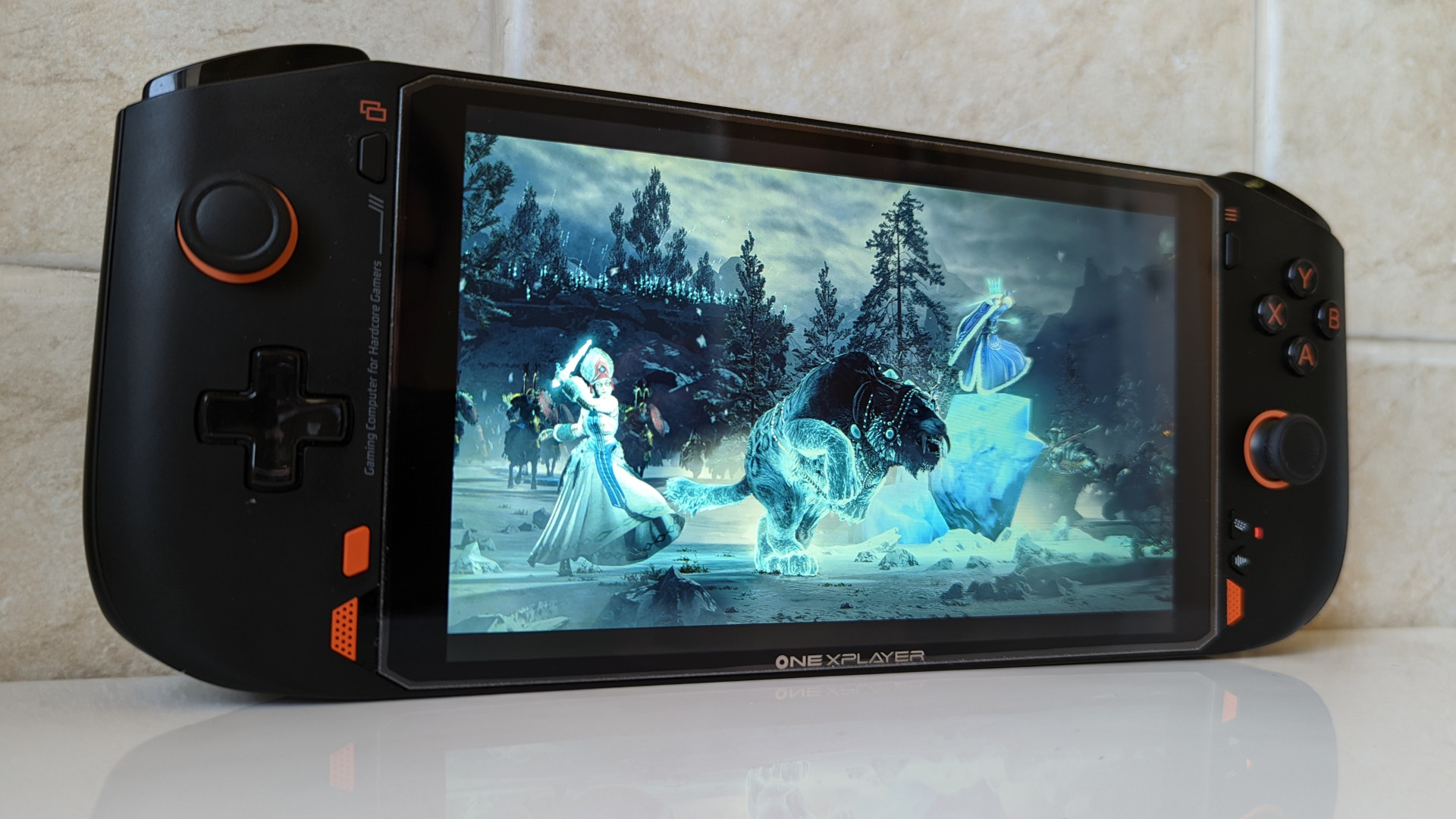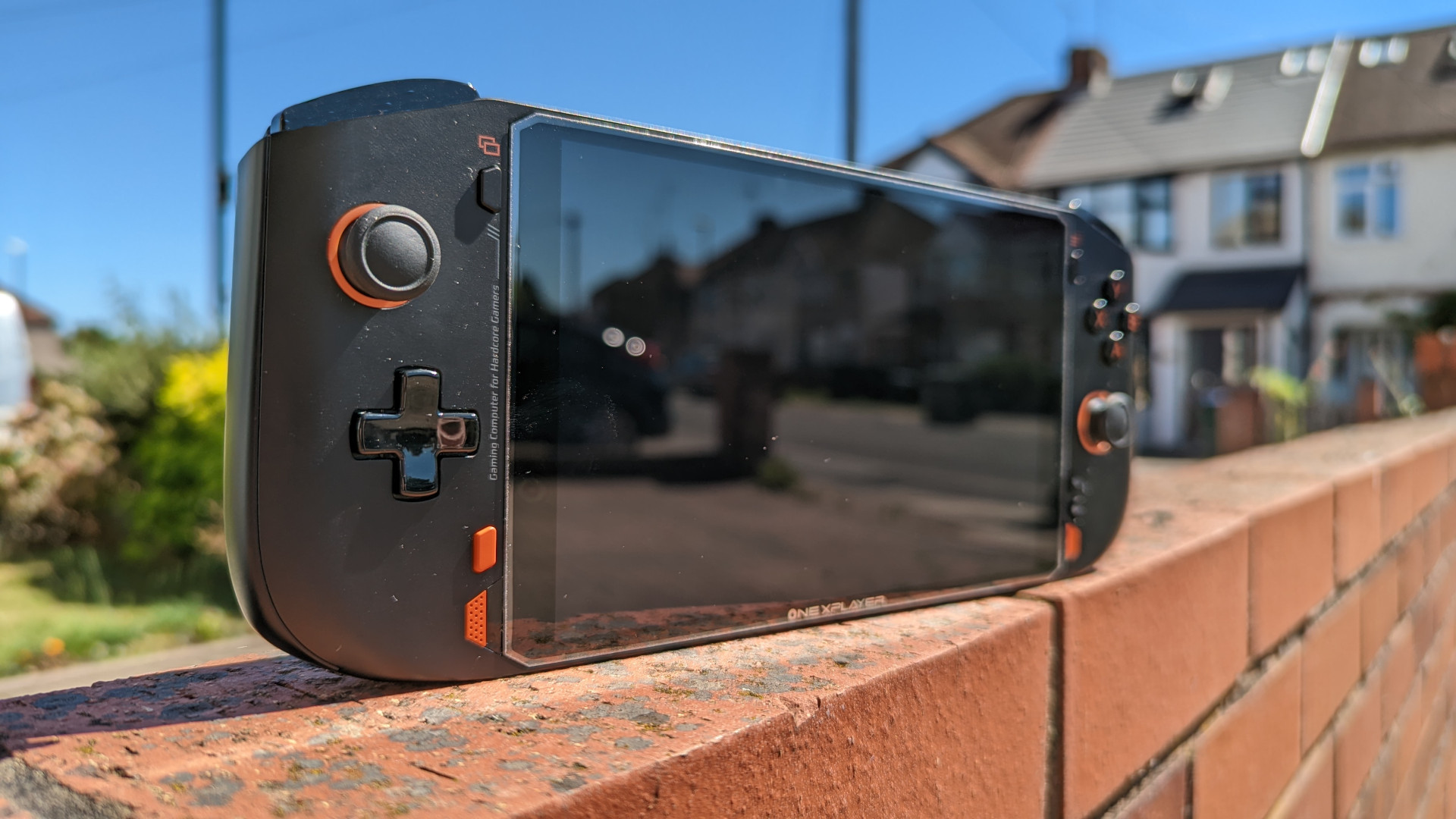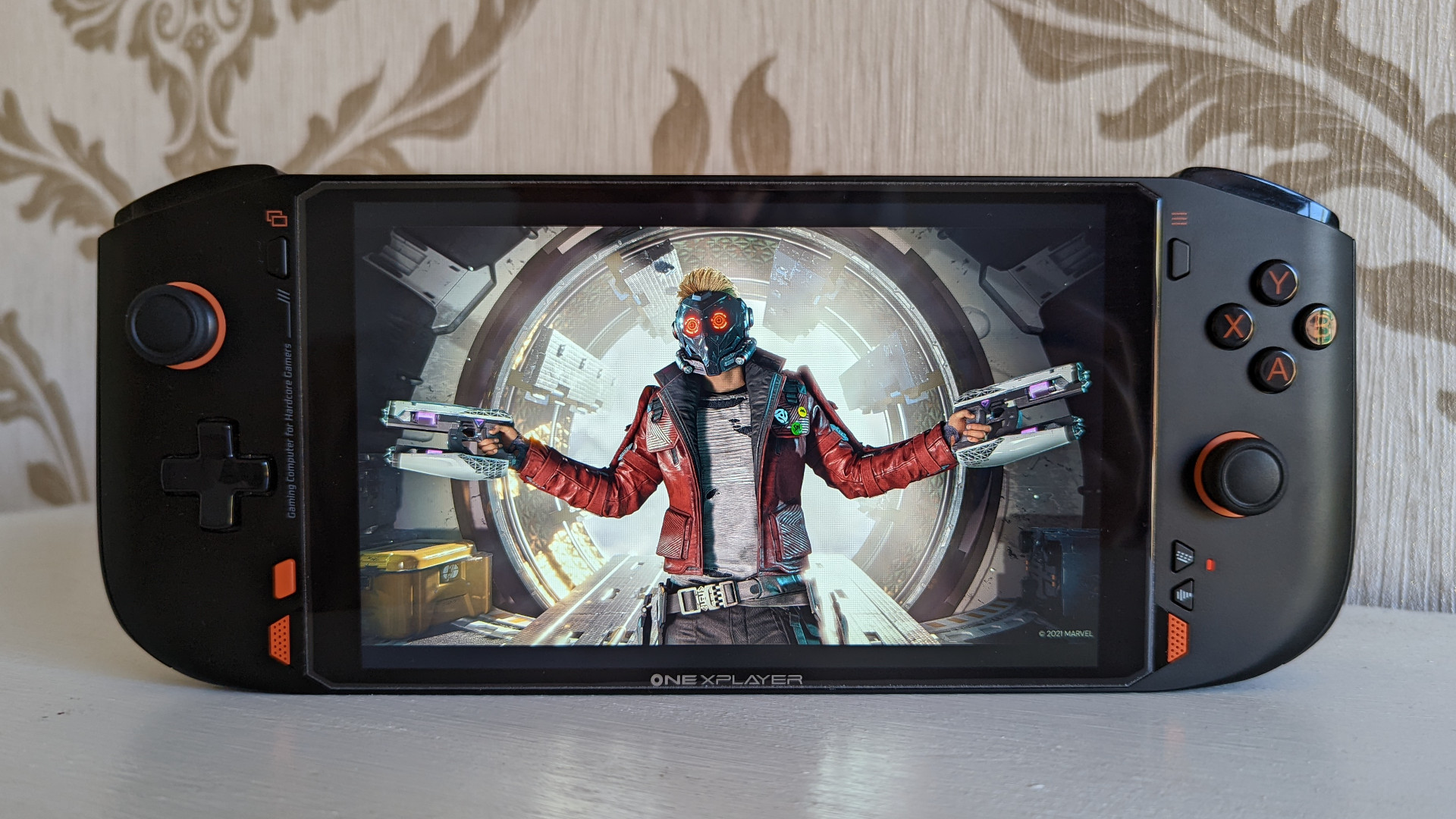Our Verdict
A well built and surprisingly performant Steam Deck competitor that would be a more compelling option if it wasn't so much more expensive
The OneXPlayer Mini AMD is a handheld gaming PC that boasts many great qualities, making it a worthy challenger to the Steam Deck and other portable competitors. While each device has their own unique set of strengths and features, one key advantage this orange-black pocket rocket has over Valve’s portable powerhouse could tip the scales in its favour.
I’ve been using the OneXPlayer Mini AMD for the past four months or so, and it’s proven to be a solid travel companion. I’m genuinely surprised how often I’ve reached for it in place of my Nintendo Switch or even my gaming laptop if I’m packing for long train journeys or short visits to my parents. There’s something about the surprising amount of performance contained within its form factor that makes it feel more convenient and versatile than its counterparts.
As impressed as I generally am with its capabilities, however, my time with the OneXPlayer Mini AMD hasn’t been flawless.
| Pros | Cons |
| Great build quality | Difficult to expand storage |
| Analogue triggers | Lower GPU specs than the Steam Deck |
| Powerful Ryzen Zen 3 CPU | Expensive |
| Full Windows 11 desktop experience |
OneXPlayer Mini AMD design
The OneXPlayer Mini AMD looks the part of a premium gaming device. Its matte black plastic chassis looks great and feels pleasing to the touch, seemingly repelling fingerprints, grease, or other unwanted blemishes that would spoil its appearance. I’d almost go as far as to say that its construction gives it a near-professional aesthetic, were it not for the small splashes of orange around its joysticks, face buttons, and speaker grills. I honestly don’t mind this, as the contrasting colours gives the machine a unique look while maintaining a degree of subtlety that isn’t often found on products targeted towards gamers.
That said, I could do without the small printed text on the top and front of the console, which refer to “hardcore gaming” and “hardcore gamers”. It’s easy to ignore after a bit, but their presence spoils the otherwise clean look of the OneXPlayer Mini AMD and generally seems a bit childish.
Thankfully, the OneXPlayer Mini AMD is far from a child’s toy, and instead feels much closer the best gaming PC builds out there. This is thanks to its comfortable countered grips on the back of the chassis and 587g weight giving it some heft. It is almost 100g lighter than the Steam Deck, though, lending to its portability. I haven’t noticed any flexing or creaking in my unit either, further contributing to the great build quality of this portable system.
| OneXPlayer Mini AMD specs | |
| OS | Windows 11 Home |
|---|---|
| CPU | AMD Ryzen 7 5800U |
| GPU | AMD Radeon RX Vega 8 Core Graphics |
| RAM | 16GB |
| Storage | Up to 2TB |
| Screen size | 7.0-inch |
| Screen resolution | 1280×800 |
| Refresh rate | 60Hz |
| Battery | 48Whrs |
| Price | $1,229 USD |
My fingers have no trouble getting comfortable atop the triggers and wonderfully clicky shoulder buttons, a quality that translates to the majority of the other buttons found on the OneXPlayer Mini AMD. It’s just the directional pad that feels a bit too mushy for my liking, but I’ve not experienced any glaring flaws with it during gameplay. If I were to make one change for my own comfort, it’d be to make the layout mirror the Steam Deck and PlayStation DualSense controller with parallel thumbsticks, rather than the Nintendo Switch and Xbox design, but your mileage may vary.
On the top and back of the plastic housing, you’ll find stylish looking cutouts that serve as intake and exhaust vents. They’re pretty large, but their position on the device makes it so that you never feel any heat from the OneXPlayer Mini AMD during normal use even under intense loads. Sure, if you go out of your way to place your hand near them or touch them for whatever reason they’ll feel hot, but I’m never bothered by the warmth generated by the system.
Comparing it to the Steam Deck and other handhelds on the market, I think the OneXPlayer Mini AMD has most (if not all) of them beat in terms of looks. This isn’t to suggest that it’s the most important quality of a handheld gaming PC, but I appreciate its balance of flash and utility without being too gaudy or impractical.
OneXPlayer Mini AMD features
As you’d expect, the OneXPlayer Mini AMD features a Windows 11 operating system preinstalled on its NVMe storage, rather than the Linux based SteamOS that you’ll find on the Steam Deck. This gives it a couple of advantages compared to Valve’s offering, with greater application and game compatibility being the biggest one for me. While the Steam Deck verification process has come a long way, it still has a lot of ground to cover before it can act as a proper PC replacement – something that the OneXPlayer is more than capable of.
Its octa-core processor, the AMD Ryzen 7 5800U, may not be the newest chip out there, but it still packs plenty of punch for multitasking and CPU-bound workloads. This wouldn’t matter as much if it weren’t for how easy it is to get the OneXPlayer Mini AMD up and running with a USB dongle, allowing you to connect your gaming keyboard, mouse, and monitor to it. In a pinch, you have yourself a desktop replacement, but a laptop may be the way to go if you aren’t reliably walking into areas with displays ready and waiting for you.
Speaking of which, let’s talk about the display. You can pick up the OneXPlayer Mini AMD with either a 1280×800 or 1920×1200 resolution, but the size of the 60Hz IPS touchscreen panel will remain the same at seven inches. I’m using the 800p model, and even without testing the other option, I definitely recommend picking up the lower resolution device for several reasons. The Vega integrated graphics inside the OneXPlayer Mini AMD are simply better suited to a lower resolution. This doesn’t mean you’ll be compromising on image quality, far from it, as you’ll still be treated to 215 pixels per inch for a surprisingly sharp image.
I do wish that an OLED model was available, as I believe it would remedy my biggest problem with the screen, in that it simply doesn’t get dim enough. As someone who wants to use the OneXPlayer Mini AMD in bed while next to my partner, I can’t turn down the brightness to a point that it doesn’t bother us both. I will say though that this speaks to its ability to handle bright conditions, in which I have no issues.
While I don’t play many racing games, I find myself rather enjoying the analogue triggers packed inside the OneXPlayer. Testing them out in Forza Horizon 5, it feels just as satisfying to pull off drifts and other manoeuvres as connecting one of the best PC controllers. The triggers essentially give you greater control over the amount of acceleration or braking you want to apply while driving, which makes for a more immersive experience.
Using any sort of headphone or gaming headset is a fuss free experience too, with the OneXPlayer Mini AMD supporting Bluetooth 5.0 and packing a 3.5mm combi port. I also find the speakers to be surprisingly good. To be clear, plugging in a pair of cans is definitely the way to go, but they’re useful in a pinch and don’t sound nearly as horrible as some of the tweeters I’ve heard on other laptops and monitors.
You can charge the OneXPlayer Mini AMD via either of its two USB Type-C ports, with one on the top of the chassis and the other on the bottom. This should help cater to individual preferences, with me personally preferring to plug in the charger at the top of the device, and more I/O is of course welcome. There’s also a single USB Type-A port too for any wireless dongles you might want to connect, or just an easy means of plugging in peripherals like a gaming mouse or keyboard.
The last major features I’d like to touch on are the several unique buttons you’ll find dotted towards the bottom of the OneXPlayer Mini AMD. The bright orange one on the left acts as a home button of sorts, promptly bringing you back to the desktop once pressed. This is useful as an Alt+Tab replacement but it unfortunately doesn’t always work, with some games outright refusing to dismiss. It hits more often than it misses, thankfully.
Meanwhile, the black buttons with white legends on the right serve a couple of purposes. One can be pressed to bring up an on-screen keyboard, or held to toggle between the OneXPlayer Mini AMD’s thumbsticks acting as a controller or a mouse. While the touchscreen is serviceable, it’s great to have this option, and it makes navigating Windows in particular much easier. Just below it is the fan profile controller, which is used to switch between two modes that prioritise cooling or acoustics.
In short, the feature set of the OneXPlayer Mini AMD is pretty robust. However, it’s worth mentioning that it lacks some of the niceties that come with the Steam Deck because it runs Windows 11 instead of SteamOS. The ability to change the display’s refresh rate via GameScope, as well as set system wide frame rate limits would be nice, but this is more of a reflection on what Valve is bringing to the table with their bespoke operating system.
Finally, I’d have greatly appreciated the inclusion of a microSD card slot like the one on the Steam Deck. Your only option to expand the OneXPlayer’s storage is to either pay more for a larger internal drive, or take it upon yourself to open it up and swap it out. However, I wouldn’t recommend most people do this as the M.2 bay isn’t easily accessible, and you could risk breaking the device’s Wi-Fi card in the process.
OneXPlayer Mini AMD performance
As a self-described “gaming computer for hardcore gamers” that costs over $1,000, the OneXPlayer Mini AMD creates unnecessarily lofty expectations for itself. It’s important to remember that this device doesn’t boast a dedicated graphics card, and instead relies on the integrated GPU found on its processor, so our performance targets should adjust with this in mind.
The OneXPlayer Mini AMD isn’t quite as powerful as the Steam Deck when it comes to graphical horsepower, packing AMD Radeon RX Vega 8 graphics versus the newer RDNA 2 GPU cores found in Valve’s machine. That said, these are still better than basically anything you’ll find on similar Intel powered devices, and can surprise you when it comes to frame rates.
Running through our suite of videogame benchmarks at native resolution and medium settings, I was thoroughly impressed by the ability of the OneXPlayer Mini AMD. Average frame rates didn’t dip below 28fps, indicating that with a few tweaks it’d be able to happily run many modern videogames at a solid 30fps, providing you’re willing to settle for lower settings than you’d get on a full desktop.
However, where I think the OneXPlayer Mini AMD really shines is in playing the thousands upon thousands of older titles that are available across the many storefronts in the PC ecosystem. I’ve found myself revisiting old favourites such as Batman: Arkham Asylum and XCOM 2 from the comfort of my sofa and while passing time on a train, and I couldn’t be happier. Yes, these examples and many more are available for Nintendo Switch, but I guarantee the majority of them will run better on this hardware and who can argue against not having to pay for the same game again if you already own it on PC!
You will, however, have to put up with higher operating temperatures than you might be used to with the Nintendo Switch. The OneXPlayer has never thermal throttled in my time using it, but it has reached peaks of 78 degrees with its cooling fan working hard and loud to keep temps down. Turning the quiet profile on sees things get hotter still, by about 10 degrees in some cases, but it’s not anything to be concerned about.
The battery life of the OneXPlayer Mini AMD is comparable to its peers, with more demanding applications draining it from full to flat in just under two hours. At 48Whr, its battery capacity is actually slightly larger than the Steam Deck, but this doesn’t translate into any substantial lead. Thankfully, it doesn’t take more than a few hours to fill it back up, thanks to the included 65W wall charger.
There’s no question that the best gaming laptop you can find for the same price as the OneXPlayer Mini AMD will offer greater performance, and be easier to work from. Ultimately, it’s a question of how much you prefer either form factor. I, personally, prefer the latter, but it’s extremely hard to justify opting for it given how much it costs.
OneXPlayer Mini AMD verdict
Price may prove to be the Achilles heel for the OneXPlayer Mini AMD. The Steam Deck simply offers better value for a very similar – and in some ways better – experience for less than half its $1,229 USD cost (which doesn’t include a protective carrying case either, unfortunately).
Coming back to what I said at the beginning of this review, though, one key advantage of the OneXPlayer Mini AMD that cannot be ignored is that it’s actually available today. Yes, stock and supply should improve for the Steam Deck in the coming months, but you’ll still be waiting at least four months if not more for one of Valve’s devices if you place your reservation today.
So, if you can’t get your hands on a Steam Deck anytime soon and you simply can’t wait for them to become more widely available, then the OneXPlayer Mini AMD is a good device if you can afford it. It’s actually hundreds of dollars cheaper than some of its competitors from Ayaneo and GPD, but it’s still pretty expensive. That said, even for all its positives it simply can’t escape from under Valve’s looming shadow.
